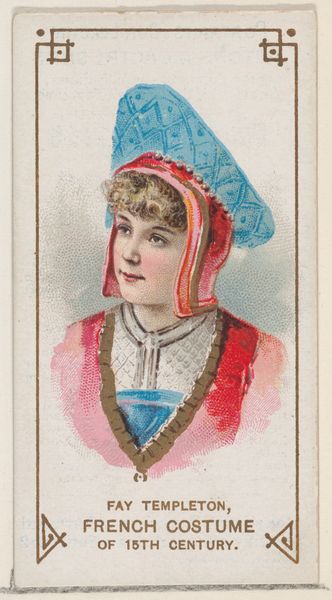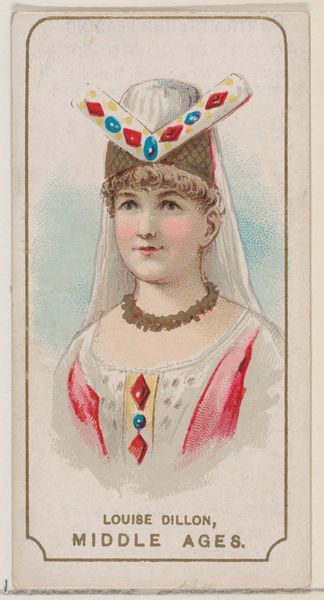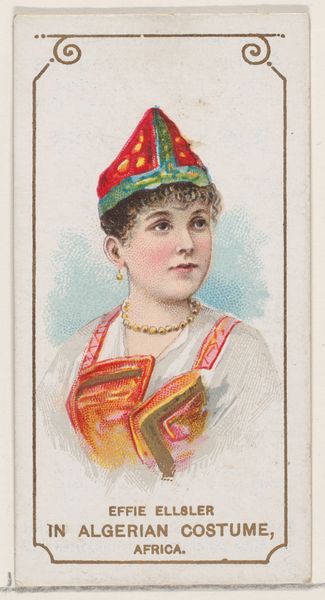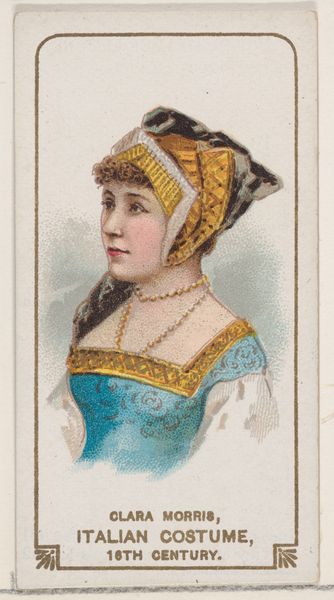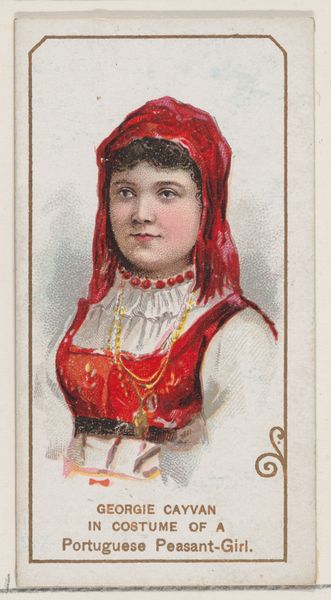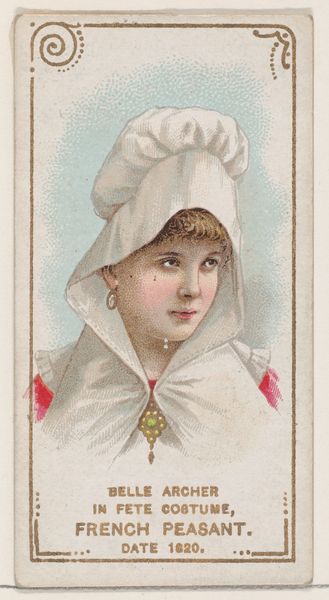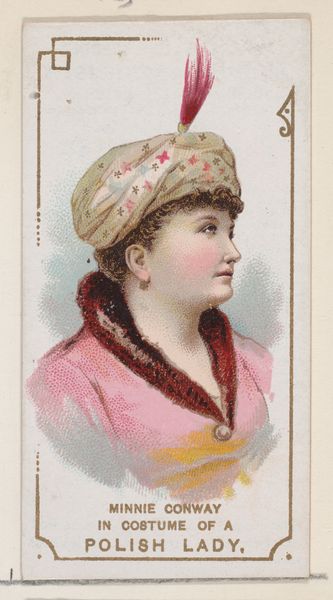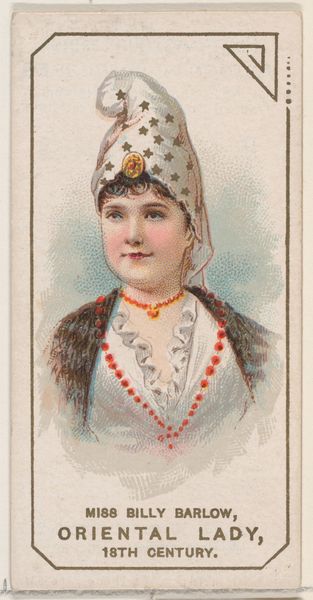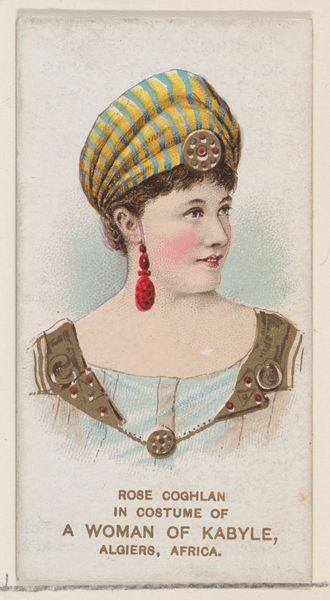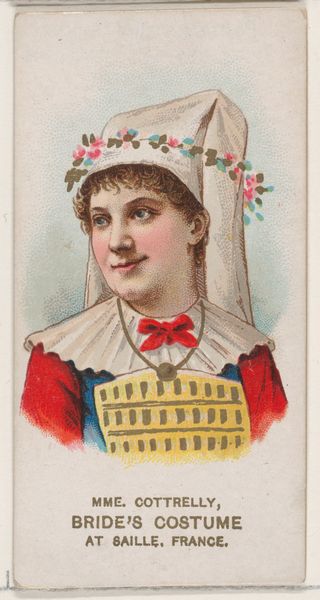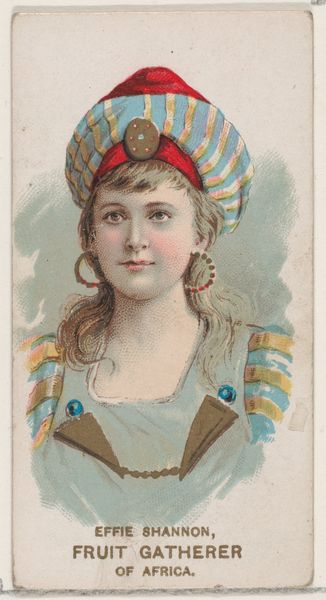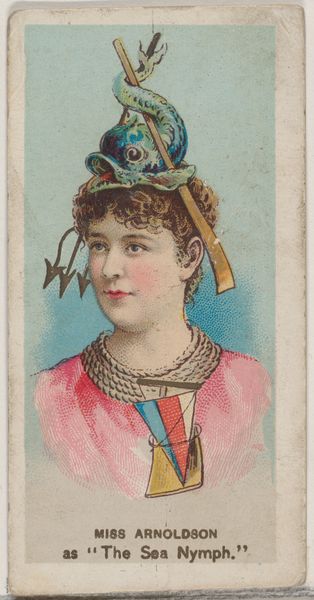
Mollie Fuller as a Water Carrier of Tunis, from the set Actors and Actresses, Second Series (N71) for Duke brand cigarettes 1888 - 1890
0:00
0:00
Dimensions: Sheet: 2 3/4 x 1 1/2 in. (7 x 3.8 cm)
Copyright: Public Domain
Editor: This color print, dating from 1888 to 1890, is entitled "Mollie Fuller as a Water Carrier of Tunis," produced by W. Duke, Sons & Co. It's striking how the artist blends portraiture with what feels like a romanticized vision of North Africa, meant for a cigarette card! How do you interpret this image in terms of its representation of identity and culture? Curator: That's a perceptive reading! I think it's essential to unpack the layers of representation at play. On the surface, it seems to be an exoticized portrayal, common in the era's Orientalist fascination. But it's also crucial to consider the context of advertising and how images like these perpetuated certain colonial ideas about North Africa and its people. Consider the actress Mollie Fuller – what does it mean that she is cast as this "exotic" figure? Editor: That’s fascinating! So, it’s not just about portraying a profession but also about marketing an idea, specifically associating the cigarette brand with a romanticized and likely inaccurate picture of Tunis? Curator: Exactly. These images often lacked genuine cultural understanding and instead served to reinforce a Western gaze. We have to question how this representation affected both the perception of Tunisian identity at the time and its legacy. Is Fuller "honoring" the water carrier or is she co-opting an identity that is not her own? Editor: It brings up important questions about appropriation and the power dynamics inherent in representation. The fact that it was printed on a cigarette card makes it even more pervasive and insidious. Curator: Precisely. Thinking about intersectional themes like gender, race, and colonialism is essential for analyzing how power operates within these images. I would suggest we ask ourselves, to whom is this image targeted, and what are the benefits sought from such representation? Editor: That definitely shifts my understanding of the image! I hadn't thought about it so critically before. Curator: It’s all about contextualizing these artifacts within the broader social and historical narratives. These seemingly innocent cards participated in circulating ideologies of their time.
Comments
No comments
Be the first to comment and join the conversation on the ultimate creative platform.
